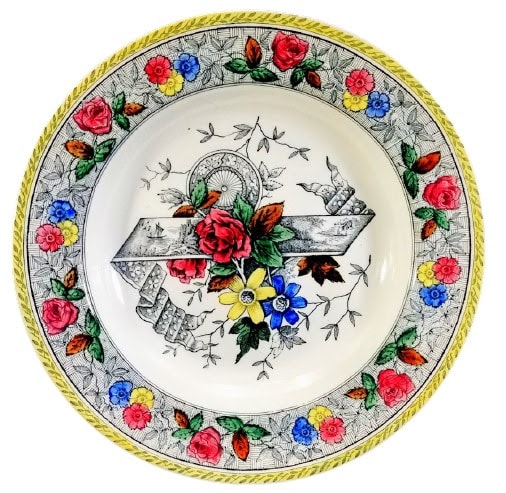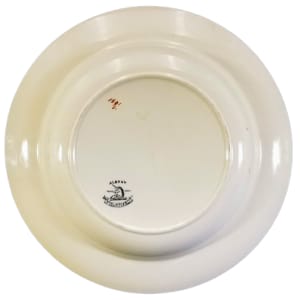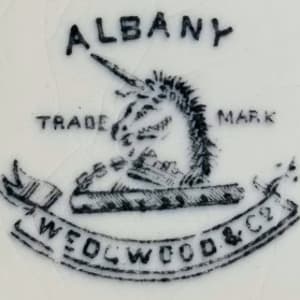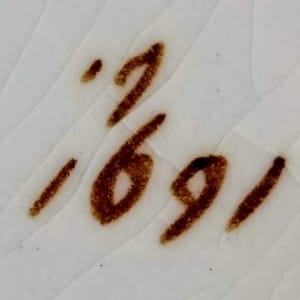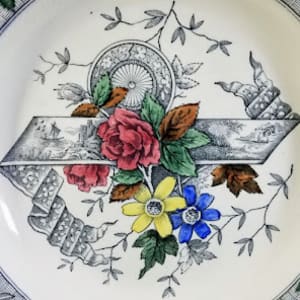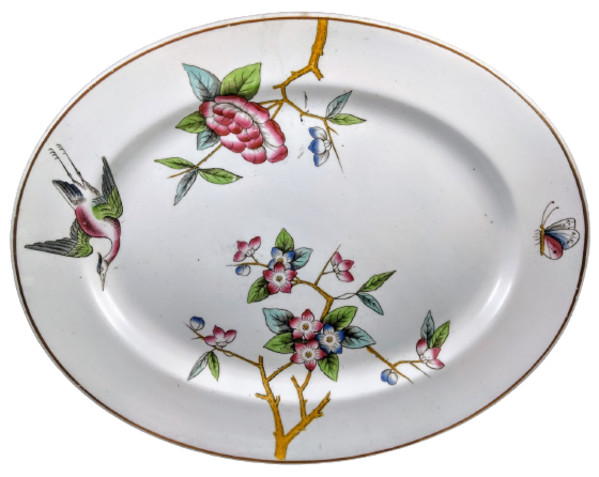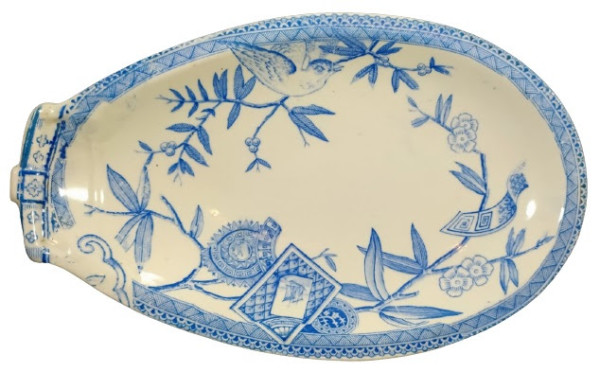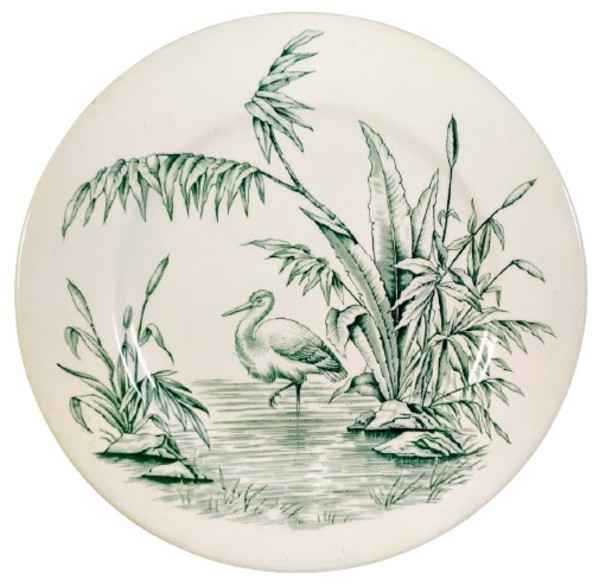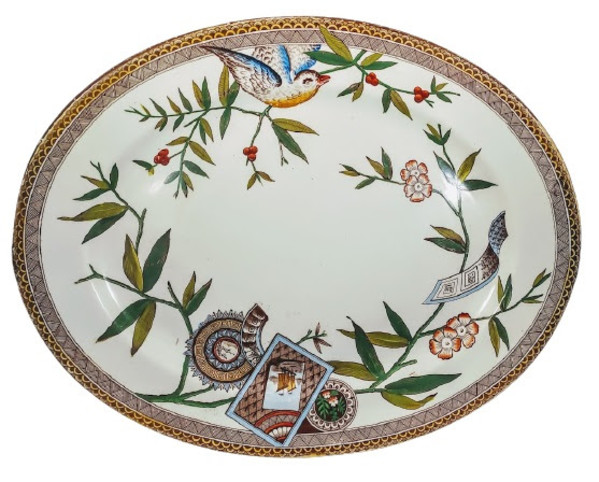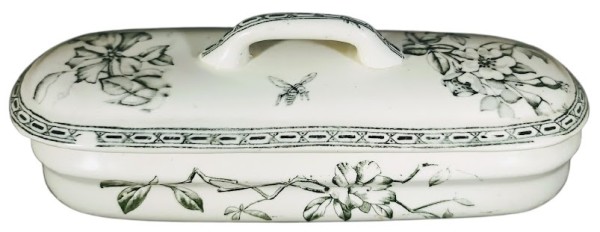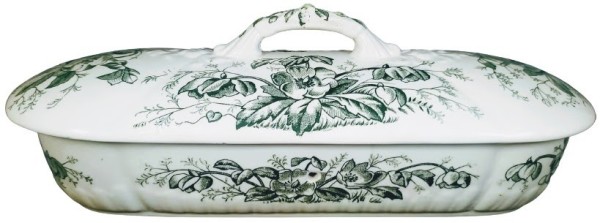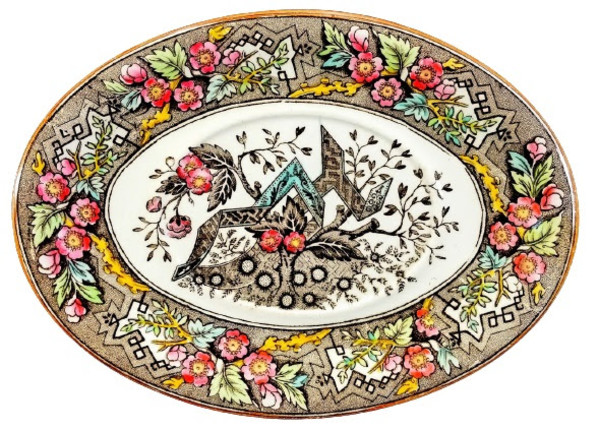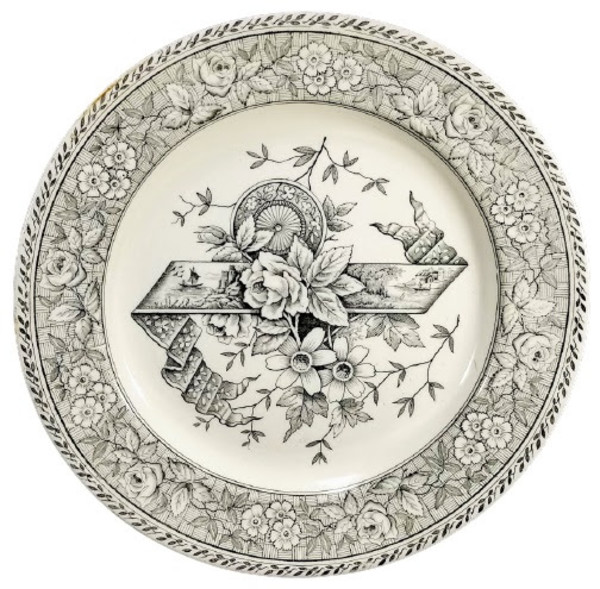- Wedgwood & Co.
- Albany, c. 1862-1890
- Earthenware
- 10.5 x 10.5 in (26.67 x 26.67 cm)
-
Not For Sale
Plate, 10.5 inches diameter. Black transfer with polychrome clobbering. Wedgwood & Co.’s Albany represents a pattern transitioning into the Aesthetic period (c. 1860-1900). While there is still a complete and moderately dense border on the rim, the center is somewhat light and open, although it is printed with a design that covers most of the center well. This design also demonstrates the early use of cartouches. There are two ribbon cartouches—each with different boating scenes either side of the superimposed rose (one includes a sailboat, and the other a canoe). Tucked in above the ribbon and somewhat behind the rose is a circular cartouche filled with a stylized floral design. These signal the later Aesthetic craze for cartouches used to contain various designs and landscapes in finite spaces. The center design also hints at the asymmetry that would dominate later Aesthetic Movement patterns. Here it is reflected in the different boat cartouches on either side of the rose, and the varying length of the rippled ribbon ends that extend in either direction from the horizontal run of the ribbon. Note also the asymmetrical placement of the flowers (more below the ribbon than above it). Later, during the height of the Aesthetic Movement, the patterns opened up and blank space itself was used as a design element. Often only a partial border was employed, and in many cases there were no borders at all. As time progressed, larger areas of the center well were left open, and asymmetrically-placed cartouches became common. The Albany pattern foreshadows what was to come.
The wares of Wedgwood & Co. are sometimes confused with those of Josiah Wedgwood & Sons Ltd. However, the inclusion of “& Co.” or “& Co. Ltd.” in the name always differentiates between the two companies as Josiah Wedgwood never used “& Co.” Enoch Wedgwood (a distant cousin of Josiah Wedgwood) became a partner in Podmore, Walker & Co. in 1835 and in 1856 the business was renamed Podmore, Walker, Wedgwood & Co. Following the death of Thomas Podmore in 1860, Enoch Wedgwood inherited shares in the interests of the business left to him by Podmore, the partnership was dissolved and became Wedgwood & Co. Enoch Wedgwood took his younger brother Jabez into partnership. By the 1870s the company was employing between 600 and 700 men. Enoch died in 1879 and was succeeded by his sons Edmund and Alfred Enoch Wedgwood who ran the business until 1900 when family control ceased. The company did not have the same drive under the two sons and in 1890 Hollinshead and Kirkham took over the Unicorn Works. In 1900 the firm became a limited company and effective control passed out of the hands of the Wedgwood family. The new money and management put new life into the company and up to 1950 great efforts were put into regaining their former markets, largely by playing to the company’s strengths in producing high quality goods.
- Subject Matter: Aesthetic (Cartouche)
- Collections: Aesthetic Transferware
